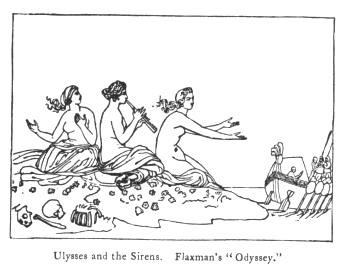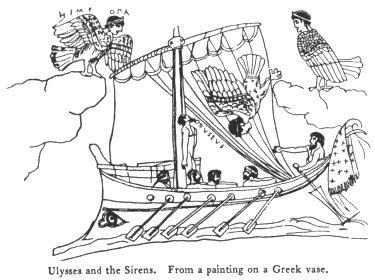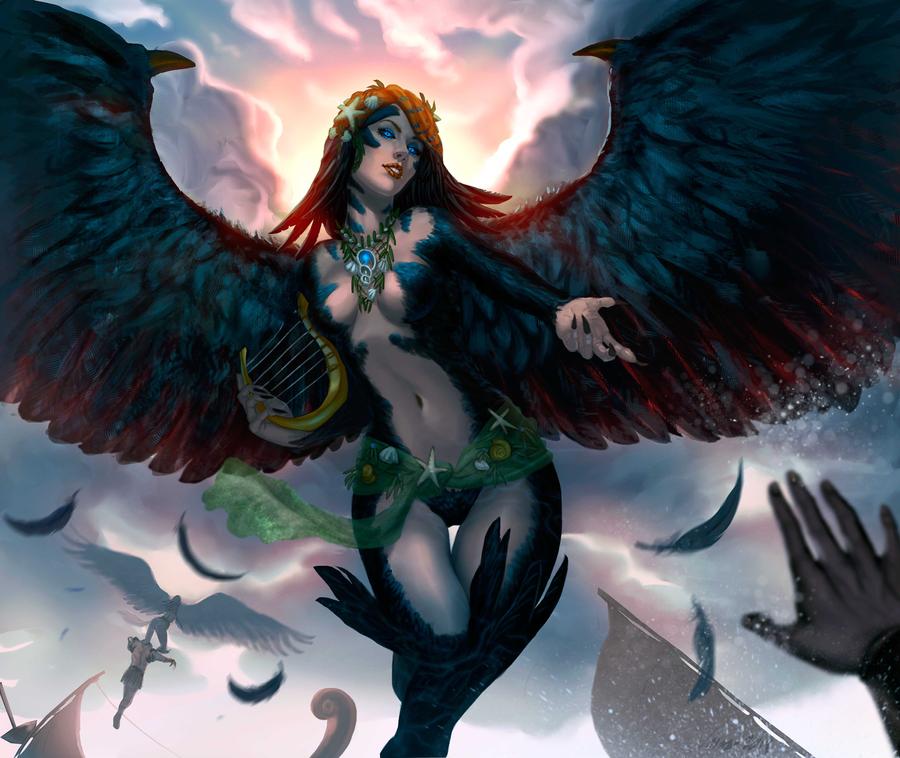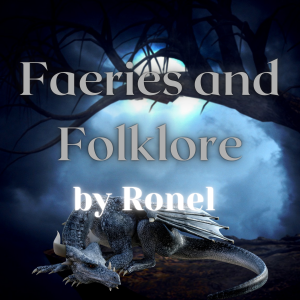S is for Sirens.


Mermaids are alive and well in every corner of the world.
Mermaid definition (by Ronel)
A familiar figure in folklore from around the world, this half-woman, half-fish creature is usually depicted as being a beautiful woman from the waist up and a glistening fish from the waist down. For the most part, the mermaid sits on a rock and combs her lustrous hair without a care in the world. “Mere” comes from Old English meaning “sea” or “lake” (large body of water) and “maid” means “young woman”, thus mermaid is a young woman of the water.
Each culture has its own version of the mermaid and thus the appearance (and name) varies from region to region.
Sometimes the mermaid is portrayed as a vicious, lustful temptress using her charms to lure men to their watery deaths. Other times she is a gentle, wish-granting creature that also warns about storms and imminent danger. Depending on the culture and tale, different aspects of the mermaid’s character are emphasised. But stereotypes shouldn’t be believed: the mermaid, by whatever name, is a capricious faery with an agenda all her own.

Somewhere along the way, the folklore of mermaids and sirens merged to create one creature: a half-woman, half-fish being known for her beauty and enthralling singing voice. But as we’ll see, Sirens are the singers and they’re half-woman, half-bird creatures…

Folklore
Fictitious and Symbolic Creatures in Art by John Vinycomb [1909]
The Sirens of Classical Mythology
The Sirens (Greek, entanglers) enticed seamen by the sweetness of their song to such a degree that the listeners forgot everything and died of hunger. Their names were, Parthenope, Ligea, and Leucosia.
Parthenope, the ancient name of Neapolis (Naples) was derived from one of the sirens, whose tomb was shown in Strabo’s time. Poetic legend states that she threw herself into the sea out of love for Ulysses, and was cast up on the Bay of Naples.

The celebrated Parthenon at Athens, the beautiful temple of Pallas Athenæ, so richly adorned with sculptures, likewise derives its name from this source.
Dante interviews the siren in “Purgatorio,” xix. 7–33.
Flaxman, in his designs illustrating the “Odyssey,” represents the sirens as beautiful young women seated on the strand and singing.
In the illustration from an ancient Greek vase gives a Grecian rendering of the story, and represents the Sirens as birds with heads of maidens.

The Sirens are best known from the story that Odysseus succeeded in passing them with his companions without being seduced by their song. He had the prudence to stop the ears of his companions with wax and to have himself bound to the mast. Only two are mentioned in Homer, but three or four are mentioned in later times and introduced into various legends. Demeter (Ceres) is said to have changed their bodies into those of birds, because they refused to go to the help of their companion, Persephone, when she was carried off by Pluto. “They are represented in Greek art like the harpies, as young women with the wings and feet of birds. Sometimes they appear altogether like birds, only with human faces; at other times with the bodies of women, in which case they generally hold instruments of music in their hands. As their songs are death to those subdued by them they are often depicted on tombs as spirits of death.”
By the fables of the Sirens is represented the ensnaring nature of vain and deceitful pleasures, which sing and soothe to sleep, and never fail to destroy those who succumb to their beguiling influence.
Spenser, in the “Faerie Queen,” describes a place “where many mermaids haunt, making false melodies,” by which the knight Guyon makes a somewhat “perilous passage.” There were five sisters that had been fair ladies, till too confident in their skill in music they had ventured to contend with the Muses, when they were transformed in their lower extremities to fish:
“But the upper half their hue retained still,
And their sweet skill in wonted melody;
Which ever after they abused to ill
To allure weak travellers, whom gotten they did kill.”
Book ii. cant. cxii.
Shakespeare charmingly pictures Oberon in the moonlight, fascinated by the graceful form and the melodious strains of the mermaid half reclining on the back of the dolphin:
“Oberon: . . . Thou rememberest
Since once I sat upon a promontory,
And heard a mermaid on a dolphin’s back
Uttering such dulcet and harmonious breath
That the rude sea grew civil at her song
And certain stars shot madly from their spheres
To hear the sea-maid’s music.”
Commentators of Shakespeare find in this passage (and subsequent parts) certain references to Mary Queen of Scots, which they consider beyond dispute. She was frequently referred to in the poetry of the time under this title. She was married to the Dauphin (or Dolphin) of France. The rude sea means the Scotch rebels, and the shooting stars referred to were the Earls of Northumberland and Westmoreland, who, with others of lesser note, forgot their allegiance to Elizabeth out of love to Mary.
“Few eyes,” says Sir Thomas Browne, “have escaped the picture of a mermaid with a woman’s head above and a fish’s extremity below.” In those old days when reading and writing were rare accomplishments, pictured signboards served to give “a local habitation and a name” to hostelries and other places of business and resort. Among the most celebrated of the old London taverns bearing this sign, that in Bread Street stands foremost.
We find this “Mermayde” mentioned as early as 1464. In 1603 Sir Walter Raleigh established a literary club in this house, and here Shakespeare, Ben Jonson, and the choice intellectual spirits of the time used to meet, and there took place those wit combats which Beaumont has commemorated and Fuller described. It is frequently alluded to by Beaumont and Fletcher in their comedies, but best known is that quotation from a letter of Beaumont to Ben Jonson:
“What things have we seen
Done at the Mermaid? heard words that have been
So nimble and so full of subtle flame,
As if that any one from whence they came
Had meant to put his whole wit in a jest,
And had resolved to live a fool the rest
Of his dull life; then when there had been thrown
Wit able enough to justify the town
For three days past; wit that might warrant be
For the whole city to talk foolishly,
Till that were cancell’d; and when that was gone,
We left an air behind us, which alone
Was able to make the next two companies
(Right witty, though but downright fools) more wise.”

The Element Encyclopedia of Fairies by Lucy Cooper
Siren:
(Also Sireen, Sirene, Syrene.)
Beautiful yet deadly nymphs of Greek mythology. Depicted as part-woman, part-bird, the sirens lured mariners to their doom with their irresistibly sweet singing. In this respect they were similar to mermaids.
Nymphs:
Nature spirits of Greek mythology, usually depicted as beautiful young women and typically associated with a specific natural feature of the landscape such as a lake, stream, tree, mountain, meadow, or spring.
Mermaid:
Half-woman, half-fish, the mermaid is a familiar figure in the folklore of cultures around the world. Usually described as having the upper body of a beautiful woman, with long flowing locks, and a shiny fish’s tail from the waist down, she is most often depicted sitting on a rock combing her tresses. Her name derives from mere, Old English meaning “sea”, and maid, “a girl or woman”.
Sometimes the mermaid is portrayed as a gentle, romantic figure with the ability to grant wishes, heal, and foretell the future, warning sailors and fishermen of imminent danger. At other times she appears as a dangerous, lustful temptress, luring ships to crash onto the rocks or using her charms to entice men to a watery death. She is an ambiguous creature, by turns inspiring pity, love, lust, and fear. Different aspects of her character are emphasized in different cultures and tales.
*More can be read in the book.

Encyclopedia of Fairies in World Folklore and Mythology by Theresa Bane
Siren
Variations: Seirenes
In classical Greek mythology the sirens (“bewitching ones”) were a type of malicious nymph born the offspring of the ancient sea god, Phorcys or from the drops of blood that hit the earth from the broken horn of Acheloos, ancient sources conflict. Half bird and half woman, she and her sisters would perch on the rocky Sicilian coastline and lure in sailors with the melodious song; once caught, their prey were eaten alive. Although they hunted the coastline, they lived inland in a meadow.
Homer, the greatest ancient Greek epic poet and author of The Iliad and Odyssey named only two sirens, but on vases they were usually depicted as three.
Over time, ancient writers evolved the sirens into mermaid-like beings who would sit on the rocky shoreline using their beautiful singing voice to lure sailors into the jetty where their ships would wreck. In these late myths the only way to kill a siren was to resist their song; if this was accomplished, the being would kill itself.
*More can be read in the book.

The Encyclopedia of Celtic Mythology and Folklore by Patricia Monaghan
A mermaid was a kind of sea fairy, and Otherworld creature who swam in shallow coastal waters, often with the intention of drawing humans into the brine and to their deaths. Their sweet singing lulled people to sleep wherever water could lap over them so they drowned; these figures may be confused with the classical siren, a death-messenger who appears as a bird as well as a singing maiden.
*More can be read in the book.
Further Reading:

Folklore in a Nutshell by Ronel
Sirens from Greek mythology are creatures that are half-bird and half-woman, with incredible singing voices who lure sailors to their death. They do appear in different forms, though: birds with the heads of women, women with bird wings and bird legs, half-woman and half-fish much like a mermaid, and as just women. The commonality among all these forms is that they are incredibly beautiful with an alluring voice that captures/hypnotises any who hears it.
There are different origin stories about sirens.
According to ancient authors, the sirens were either companions to Persephone and given wings by Demeter to help find her, or cursed by Demeter for failing to stop the kidnapping by Hades. They are fated to die if humans are able to sail past, ignoring their songs.
Another account has them entering a singing contest against the Muses at Hera’s prompting. Of course, the Muses won. They then plucked out the Sirens’ feathers and made crowns out of it for themselves. The Sirens, out of anguish for losing the competition and their feathers, fell to the sea and formed islands.
In the Odyssey and the Argonautica, the heroes sail by safely by either drowning out the sound of the sirens’ song with a lyre or stuffing their ears with beeswax.
For the most part, though, they are the daughters of Phorcys (ancient sea god) or of Achelous (river god) and one of the Muses. They hunt the coastline and live in a meadow. And because Circe described them as “lolling there in their meadow, round them heaps of corpses rotting away, rags of skin shrivelling on their bones”, we know that they are cannibals who use their allure to get the food they crave.

Sirens in Modern Culture
The Vampire Diaries
Sirens were a supernatural species who were originally psychic, and given immortality that depended on the feeding of human flesh to remain young and beautiful. They were the servants of Arcadius who were tasked with harvesting the souls of the wicked. They were one of the oldest supernatural races and there were only two known in existence.
Sirens, seemingly from their previous psychic heritage, can enter into the minds of another person to read their thoughts and access their memories. This was initially done using their voice as a guide but has since been refined into singing. They can strengthen this with physical contact, allowing them to search the entire mind of their victims and even alter their memories.
Sirens are able to manipulate their voice to lure their victims as fabled.
Derived for their mind control, Sirens can create minor illusions, forcing their victims to see what they want.
Sirens are able to induce extreme amount of pain through their telepathic powers.
Sirens possess sharp claws and is capable of causing fatal wounds on humans, the claws have only manifested when severely deprived of food or when their power had been siphoned.
Sirens feed on the flesh of humans which they require in order to maintain their youth and strength.

Sirens in My Writing
Origin of the Fae: Sirens
Young Sirens can choose a mortal life – live among humans, age like humans and even have magic like human sorceresses. Only their magic can work on Sirens. But if, at any point, her nails start to glitter silver, she has to return to her own kind (this usually happens if she’d used too much magic).
Sirens only feed on human men. They lure them into the water – either with their seductive appearances or by enthralling them with song – then they drown them, escort their souls to the Otherworld and then return to feast on the flesh before taking the bones to the roots of the tree that gives life to their kind.
Before drowning their victims, they are beauty incarnate dressed in glittering gold or silver. During the drowning, they turn into dark creatures dressed in black with a multi-coloured coiffure. After the drowning, they turn into a barely recognised female form of skinless red oozing around stray feathers and claws. After feasting on the flesh of their victims and placing the bones beneath the tree, they return to their perfect forms.
They sing from the moment they start drowning their victims, through the meal, until they’ve returned to their perfect forms.
The curse upon them is to be half-bird, half woman creatures unless they use enough magic to conceal their true nature. It takes a lot of sacrifice (the men drowned and eaten) to keep their magic strong. The bones at the roots of their tree feeds their magic.
They live in a beautiful ocean with an underwater waterfall. They have a meadow above ground that they sometimes call home. No matter where they live, they always look the same – it’s only during the feeding ceremony that they go to extremes. Most Sirens stay in their perfect form, though some like to stay in the dark creature transformation, multi-colour hair and all, to conserve magic.
Young Sirens of age have to go through a rite of passage: drowning their first victim. They have to perform perfectly or be punished by the older Sirens.
Sirens promise truth and knowledge only to deliver death. But if someone can come away enlightened instead of enthralled by the song of the Siren, the human will go free and the Siren will dissolve into the water she stands in, becoming one with the magic of the world. It is thought that if a Siren died like this during initiation, she’d live in the cool waters that the rest could only dream of.
Sirens really do know all – the past, present and future. They have the gift of telepathy and can read the thoughts of humans. It is this knowledge that got them cursed in the first place…
There is no known way to kill a Siren.
Siren translated to Afrikaans: Sirene
See them in action:
The Fae Realm (Faery Tales #1)

Yet the human showed no fear. She was still singing. He was still enthralled.
Quickly, she pulled him beneath the water and drowned him. His soul slipped out of his body, watching her in confusion.
Richelle dropped his body and sang to his soul. He followed her through the veil where she left him with a Grim in the Otherworld.
She caught a glimpse of her reflection on the walls of water and grimaced. Being a Siren was being a promise of perfection. Yet here she was, nothing more than feathers and skinless red oozing everywhere. She needed to feed.
The Good, the Bad and the Fugly, The Fae Realm, Faery Tales #1, Ronel Janse van Vuuren
What do you think of Sirens? Are they alive and well in your corner of the world? Any stories about Sirens you’d like to share? Check out my Pinterest board dedicated to Sirens.
You can listen to this post on my podcast:
You can now support my time in producing folklore posts (researching, writing and everything else involved) by buying me a coffee. This can be a once-off thing, or you can buy me coffee again in the future at your discretion.
Want a taste of my writing? Sign up to my newsletter and get your free copy of Unseen, Faery Tales #2.


No-one writes about the fae like Ronel Janse van Vuuren.






Do you know the Siren Wife folktale from Italo Calvino’s Italian Folktales collection? It’s an amazing story.
The Multicolored Diary
I’ve added it to my TBR — thanks for the recommendation!
Ulysse was stronger than their song 😉
S is for Scherenschnitte
Absolutely.
I remember arriving at a one teacher country school when I was 6. The teacher would read from The Odyssey (maybe a children’s version?) every few days to his 30 plus students. It was the highlight of the week. That was the first time I heard about sirens.
Sounds amazing!
It’s strange to think that we use the word “siren” for the harsh, loud sound coming from a police car or ambulance…
Mm… there must be some connection to death.
A fascinating piece of mythology! I discovered the Odyssey in primary school, myself. I’m a bit jealous of Linda, who had a teacher read it to her class.
I love mermaids. Siren stories are great, too. I especially love when the human is a gay guy and the song either isn’t working (because he’s like… meh…) or she has to change it up and appeal to something else he likes (which is either written fantastically because the guy’s favs have been part of the story, or it’s done with a ridiculous cliche).
Now you’re giving me ideas for a shiny new story — while I’m busy with other stories!